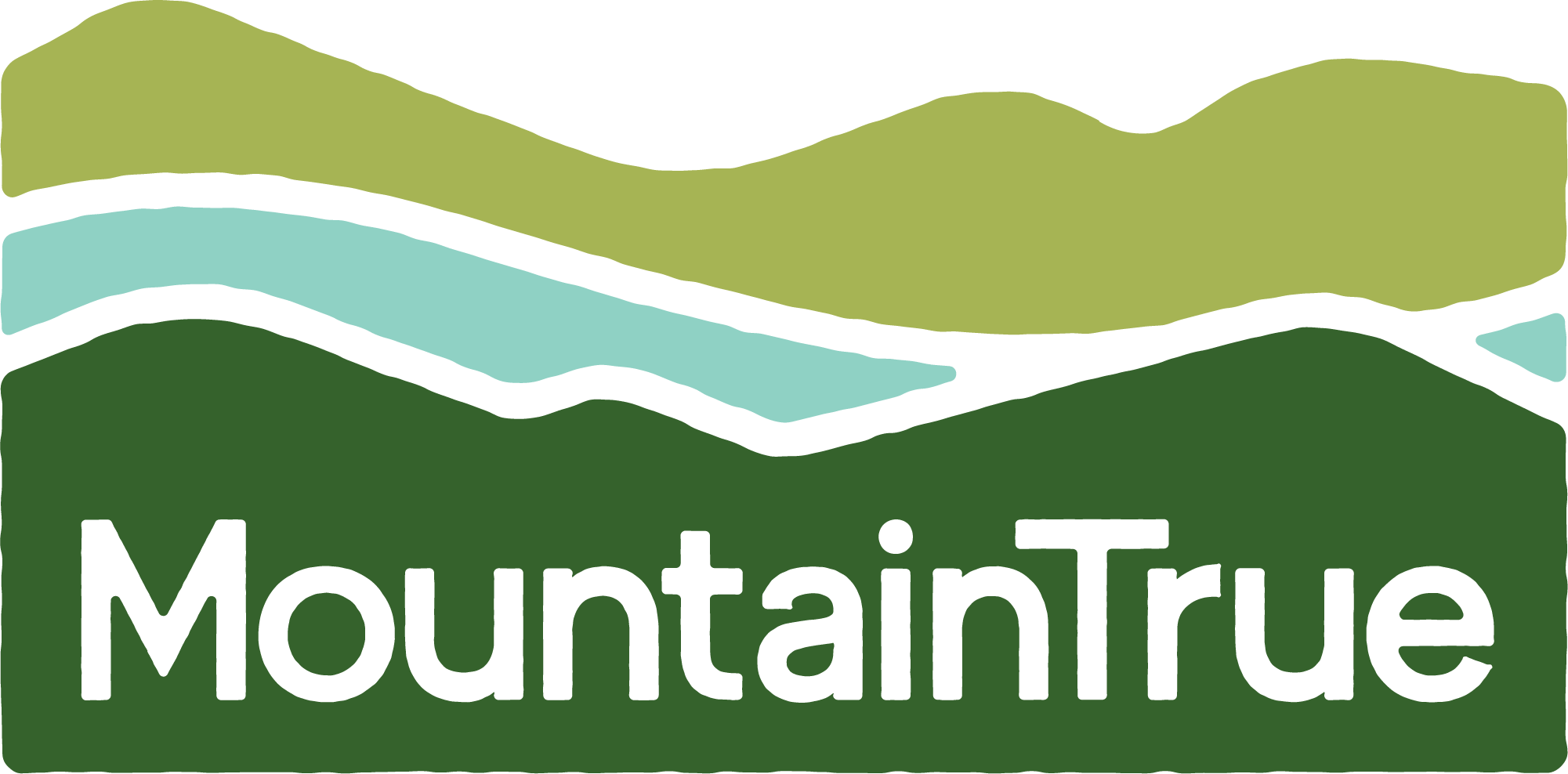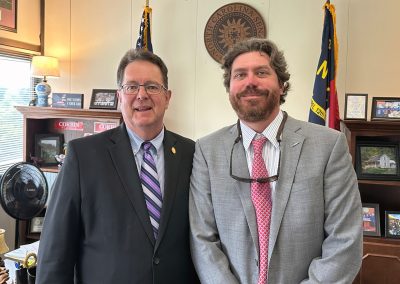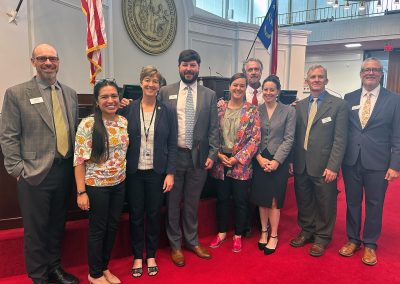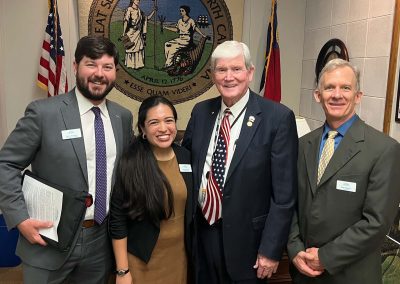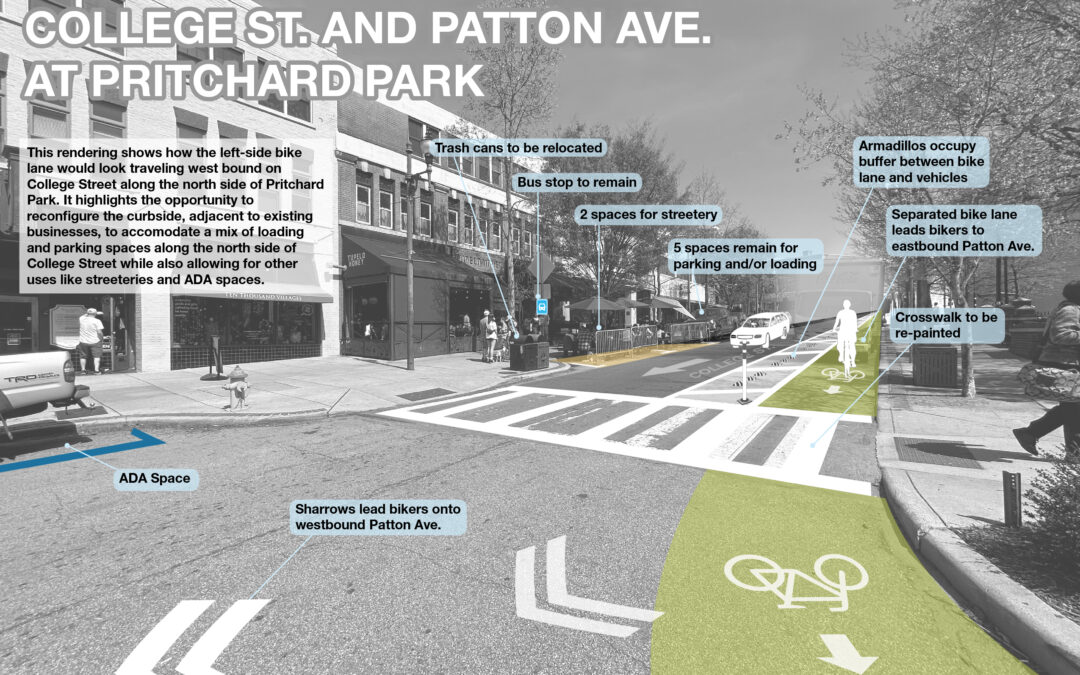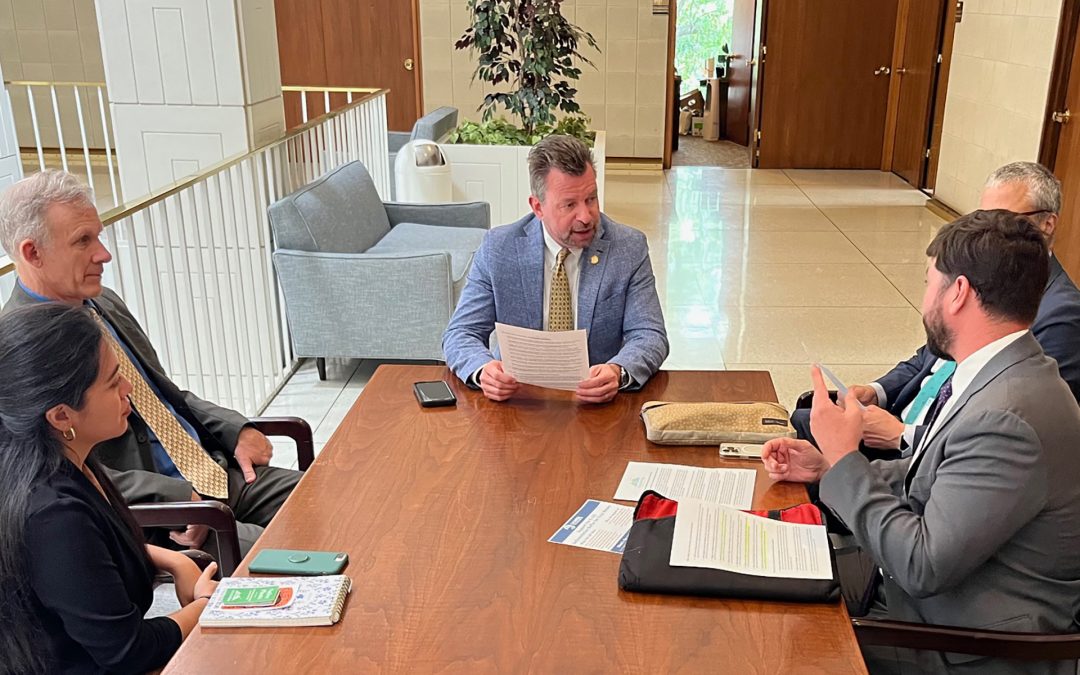
MountainTrue Advocates for Environmental Priorities During Raleigh Lobbying Trip
MountainTrue Advocates for Environmental Priorities During Raleigh Lobbying Trip
Photo: MountainTrue’s Legislative Advocacy Team sits down with Senator Tim Moffitt to discuss the specifics of a proposed Accessory Dwelling Unit (ADU) bill.
At the beginning of May, the MountainTrue legislative advocacy team embarked on a lobbying trip to Raleigh, marking our first visit to the NC General Assembly’s short session. This trip was instrumental in advancing our legislative agenda and fostering meaningful conversations with key lawmakers.
We extend our heartfelt thanks to Representatives Dudley Greene, Jimmy Dixon, Jake Johnson, Jennifer Balkcom, Eric Ager, Ray Pickett, and Senators Warren Daniel, Kevin Corbin, Tim Moffitt, and Julie Mayfield. We also appreciate the staff of House Speaker Tim Moore and Senate President Pro Tempore Phil Burger for their valuable time and engagement.
Senator Kevin Corbin
Senator Kevin Corbin with MountainTrue High Country Director and Watauga Riverkeeper Andy Hill.
During our meetings, we discussed the various programs, projects, and policies that MountainTrue supports. We shared our legislative priorities for the session, receiving positive feedback and valuable insights from our legislators. Here are the key initiatives we are focusing on this year:
Helping Property Owners Reduce Stormwater Pollution
The Community Conservation Assistance Program (CCAP) is a vital initiative that allows local soil and water districts to assist property owners in reducing stormwater pollution. Unfortunately, the demand for CCAP exceeds its current funding. By advocating for dedicated funding for the CCAP program, particularly in the French Broad River watershed, we aim to significantly reduce stormwater pollution in areas frequently used for recreation.
Supporting Rural Families with Failing Septic Systems
MountainTrue has partnered with NC DHHS to administer funding for repairing failing septic systems in Western North Carolina. This partnership has inspired Buncombe County to launch its own septic repair program. We are pushing for grants to local health departments in WNC to enable other counties to establish their own programs, thereby improving public health and environmental quality in rural areas.
Expanding E. coli Monitoring in the French Broad River
By expanding the state’s real-time E. coli bacteria detection program in the French Broad River, we can provide the public with accurate and timely information about bacteria pollution levels. This expansion is crucial for ensuring the safety of the river, which is heavily used for recreational activities.
Securing State Trail Designations for Paddle Trails
We are working to secure State Trail designations for the First Broad River in Cleveland County and the Watauga River in Watauga County. These designations will accelerate the development of paddle trails, enhancing recreational and economic opportunities for local communities.
Advocating for Local Projects and Smart Infill Development
MountainTrue is actively seeking funding for several local projects, including dam removals, trails, and greenways throughout the WNC region. Additionally, we are advocating for legislation that mandates local governments to adopt ordinances permitting the construction of accessory dwelling units in residential areas. This initiative aims to promote smart infill development, address the housing shortage, reduce the climate impacts of commuting, and protect rural areas from sprawling development.
Stay Connected and Support MountainTrue
As the session progresses, we will continue to update you on our advocacy efforts and achievements. Your support is crucial in ensuring that WNC has a strong voice for the environment in the General Assembly. MountainTrue is proud to be the only environmental organization in WNC with a full-time presence in Raleigh, and with your continued support, we can make a significant impact.
Thank you for standing with us in our mission to protect and preserve the environment in WNC. Stay tuned for more updates and action opportunities!
